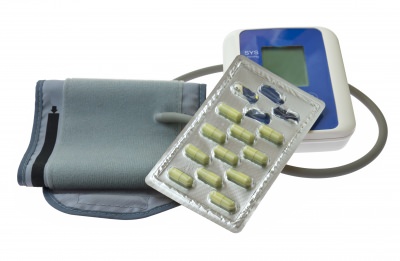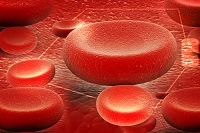
|
|
| Source |
|
What is Blood Pressure? As blood flows through your body, it applies pressure to your artery walls. When the pressure is too high, the heart has to work harder and your arteries can become damaged. This condition usually becomes more common as you age. |
|
Symptoms Many people don’t even know they have high blood pressure because there are no outward symptoms. If untreated this condition can quietly damage the heart, lungs, blood vessels, brain, and kidneys, earning the condition the name “silent killer”. When you have high blood pressure the risk for heart disease, kidney disease, and stroke increase. How to tell if you have high blood pressure The best way to know if you you are at risk is by having your blood pressure read. The normal rate is 120/80. The top rate is called the systolic pressure and measures the pressure when your heart beats. The lower number is called the diastolic pressure, and this measures the pressure between heartbeats when your heart refills with blood. Hypertension has no known cause. People with hypertension have a reading that averages 140/90 or higher. If your reading is between 120-139 and 80-89, for systolic and diastolic pressure respectively, you might have a condition called prehypertension. This range increases your risk of developing heart disease. To lower your reading doctors will recommend lifestyle changes.
Hypertension affects more men and women equally as they age. Men are more likely to develop hypertension before the age of 45, and more women will develop hypertension by the time they are 65. Your risk for hypertension is higher if you have a family member who has high blood pressure, or if you have diabetes. |
| Source |
| Risk Factors |
|
Sodium: Found in salt, sodium causes the body to retain fluid, and can put a strain on the heart, leading to increased blood pressure. Processed foods such as canned soups and cold cuts contain a lot of sodium. The American Heart Association advises eating less than 1,500 milligrams of sodium per day. Stress: While stress can make your blood pressure go up, there’s no evidence that it relates to blood pressure as a chronic condition. Stress, however, may indirectly cause hypertension because it increases the risk for heart disease. Stress is also likely to lead to other unhealthy habits like poor diet, smoking, or drinking alcohol. Weight: When you are overweight or carry a few extra pounds, you strain your heart more and this increases your risk for hypertension. Customized diets for lowering blood pressure often involve limiting calorie intake, reducing fatty foods and added sugars, while increasing lean protein, fiber, fruits, and vegetables. |
|
Alcohol: Drinking alcoholic beverages can also increase blood pressure. The American Heart Association recommends that men limit their drinks to 2 drinks* per day, while women reduce it to one. *definition of a drink: a 12 oz. beer (355 ml), a 4 oz. glass of wine (118ml), a 1.5 oz. of 80-proof spirits (44ml of 40% alcohol), and 1 oz. of 100-proof spirits (30ml of 50% alcohol). |
|
Caffeine: This has a temporary effect on blood pressure and studies have not found a link between hypertension and caffeine. Regardless, the America Heart Association recommends only one or two cups a day. Medications: Several medications can cause blood pressure to rise, such as decongestants, steroids, birth control, NSAID pain killers, and certain anti-depressants. |
 |
| Source |
|
Treatments Diet: There are several ways to lower blood pressure. A change in diet is one such way. The Dietary Approaches to Stop Hypertension or DASH diet was designed to do so. It focuses on increasing fruits, vegetables, whole-grain foods, low-fat dairy, fish, poultry, and nuts consumed and avoiding red meats, saturated fats, and sugars. Exercise: Another way to combat high blood pressure is through exercise. Doctors advise at least 150 minutes of moderate intensity exercise per week and at least two muscle strengthening activities per week. Activities such as brisk walking, gardening, cycling and aerobic classes are recommended. Diuretics: An alternative way to lower blood pressure are through diuretics, also called water pills. These help the body get rid of excess water and sodium. The side effect of these is that you will be urinating more than usual. |
|
Beta-blockers: A way to help slow down your heart beat, beta-blockers can help with hypertension by easing your heart’s heavy workload. This is often a treatment for arrhythmia, which is an abnormal heart rate. This treatment for hypertension is often prescribed along with other medications.

ACE Inhibitors and Angiotension Receptor Blockers: Taking ACE inhibitors (angiotensin - converting - enzyme) can give your heart an easier time because they reduce the body’s supply of angiotensin II. This is a chemical that causes your blood vessels to contract and narrow. With less angiotensin II, you will have more relaxed and open arteries, thus reducing your blood pressure rate. Similarly, you can take pills to block the receptors for angiotensin II. These pills can take several weeks to be effective. |
| Source |
Calcium Channel Blockers: Another part of the body, you could block to fight hypertension is your calcium channel. Calcium causes your heart to contract strongly. Blockers slow the movement of calcium in your blood vessels and heart cells, resulting in your heart being contracted more gently and more relaxed blood. These pills need to be taken with milk or food, and you should avoid alcohol and grapefruit juice because they have possible interactions.
Medications and Complementary Therapies: Your doctor might suggest other blood pressure medications such as vasodilators, alpha blockers, and central agonists. Along with lifestyle changes, doctors also might recommend complementary therapies such as meditation, yoga, tai chi and deep breathing. These relaxation techniques can allow your body to enter a state of deep rest, and lower blood pressure. Herbal therapies are not recommended because they often interfere with blood pressure medication. |
H/T: www.webmd.com
Email photo source: freedigitalphotos.net